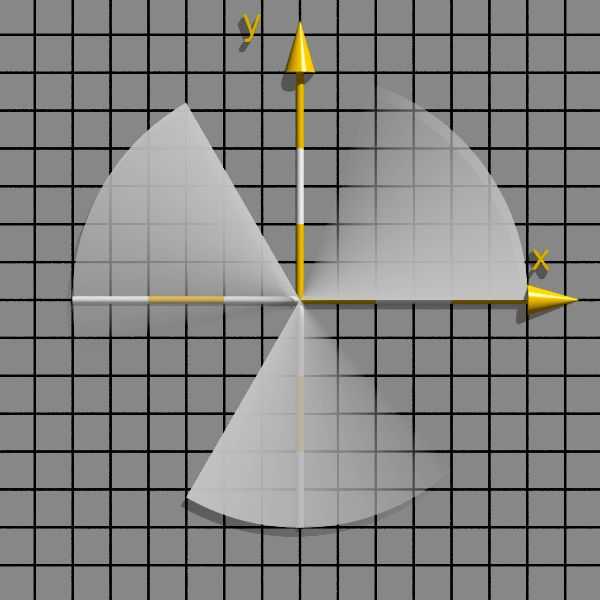Step 2: How to simulate the motion blur of rotating blades.
To acchieve this effect we have to use a thin disk with a texture of radial stripes going from a little bit transparent
white colour ( "color rgbt <1,1,1,0.3>") continuously to a totally clear section ("color Clear").
Increasing the last value of rgbt<1,1,1,0.3> to i.e. rgbt<1,1,1,0.5> make the blur less visible and more transparent.
If we use white blur stripes than to test this effect we need to take a dark background so that the effect will be visible clearly.
The statement "radial" together with a "texture_map" shows this effect in the xz-plane,
so we have to turn it by rotate<90,0,0> to the xy-plane.
Using the Number_of_Blades as well as the Blade_Radius with a declared variable, allows us to adapt this disk to any kind of propeller we want.

Simulating motion blur |
//----------------------- blured radial stripes
#macro Radial_Blur_TextureXY (Number_of_Radial_Stripes)
radial
frequency Number_of_Radial_Stripes // = number of blades
rotate <90,0,0> // turn it in x y plane
texture_map { [0.00 pigment {color rgbt<1,1,1,0.3>}
finish {ambient 0.15
diffuse 0.85
phong 0.1 }]
[0.60 pigment{ color Clear }]
[1.00 pigment{ color Clear }]
}
#end // end of macro --------------------------------------
// -------------- the blur of the propeller blades
#declare Number_of_Blades = 3;
#declare Blade_Radius = 3.00; // length of the blades
cylinder { <0,0,0>,<0,0,0.001>, Blade_Radius
texture{ Radial_Blur_TextureXY(Number_of_Blades)}
translate<0,0,-0.1>
}
// --------------------------------------------------------- |